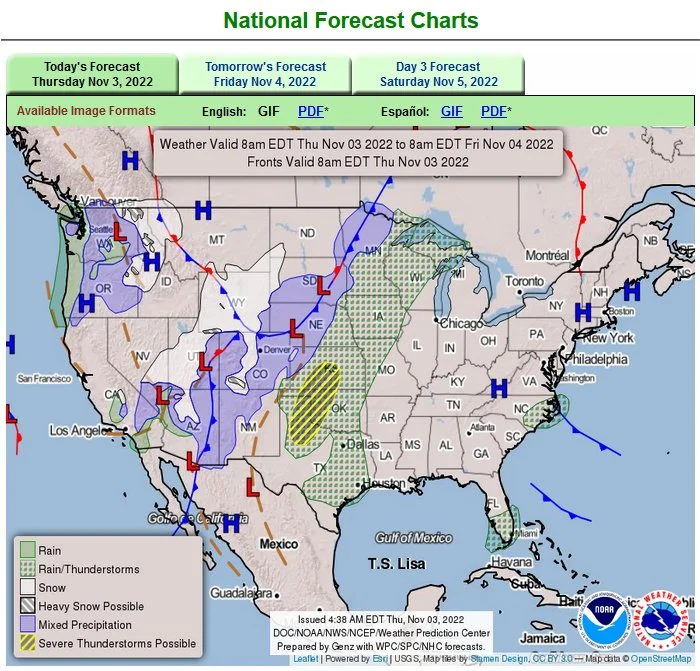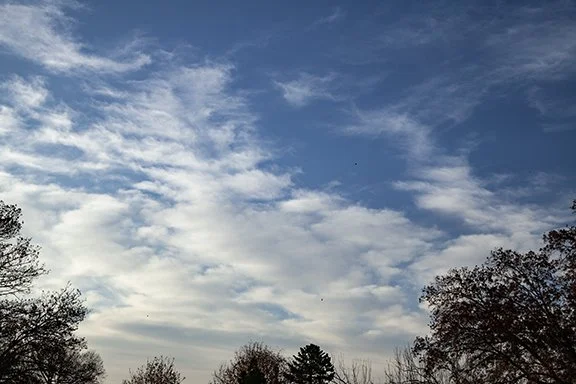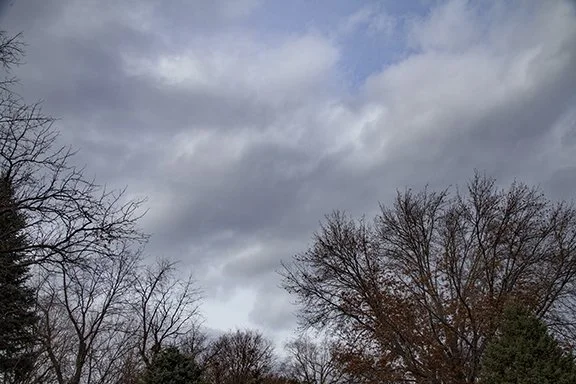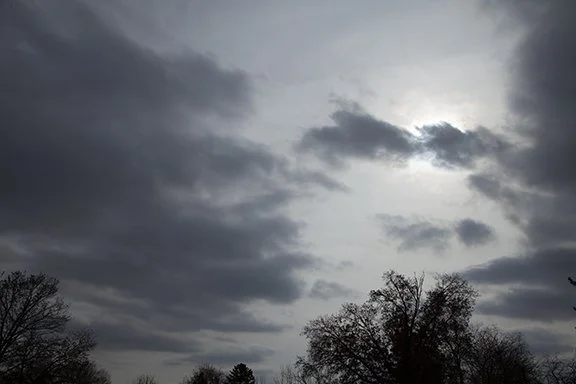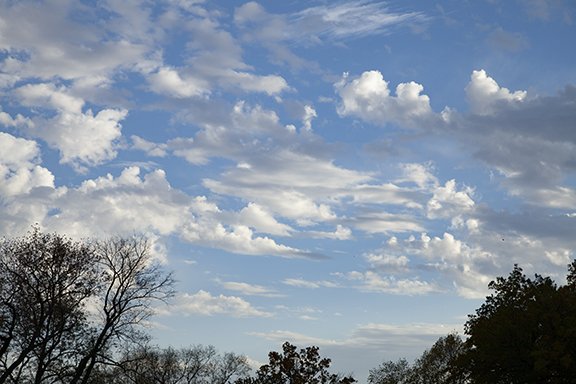Before the time of satellite imagery and computer weather forecast models an observer looking at this sunset could only guess if there was a storm over the horizon.
This photo looks to the southwest toward Cirrus, Altostratus and Altocumulus clouds. As luck would have it these clouds were detached from the real storm that would approach from the northwest in 48 hours. These clouds were associated with ‘warmer’ air aloft moving our way from the Southern Plains. The air was being lifted enough to condense its water vapor into tiny water droplets and ice crystals.
The sky does provide hints of what is to come if you know what to look for. The more you know about what is happening the more hints clouds can provide. Having a barometer to watch air pressure rise, fall, or remain steady is helpful. If pressure is changing quickly a change is more imminent. Noting the wind direction and speed and how they are changing helps forecast what is on the way. Your forecasts won’t be perfect but learning about the wind, air pressure, and clouds opens the door to being more weather wise!
In this case we ended up with 4 inches of snow.








































